Liri Valley – The Canadians Break the Gustav Line
This is the 11th post on the Liberation Tours fall 2016 trip retracing the path of the Canadian Army campaign in Italy during WWII. It is the first of two posts on the fighting that took place in the Liri Valley south of Rome from May 11-June 4, 1944. In the last post on Ortona I described how the Canadians successfully breached the eastern end of the Gustav Line in desperate house to house fighting over the 1943 Christmas season. The Americans, British and Commonwealth troops had not been so fortunate at the western end of the line where no less than four attempts to breach the line had been repulsed, all with enormous losses.
The first attempt was in late January, 1944 when General Mark Clark ordered a ‘diversionary’ attack across the Rapido River which resulted in a slaughter of American G.I.s on a scale never witnessed before. 4,000 Texans tried to cross the heavily mined and fortified river – less than half returned. To make matters worse, the corpses of many of the dead lay entangled in barbed wire on the edge of the river and were unretrieved months later when renewed efforts to cross began.
The other failed attempts all centred around the ancient abbey of Montecassino and the town of Cassino below it. Americans, Brits, New Zealanders and Poles had tried three times to take the strategic position that dominated the Liri Valley and the road to Rome. All ended in defeat. The abbey and town had been reduced to nothing but rubble by Allied bombing which resulted in many civilian deaths, but not much damage to the German defenders. Ironically, the rubble piles turned out to be better places from which to defend than the abbey or the town.
This is what Monte Cassino Abbey looked like after the Allied bombing.
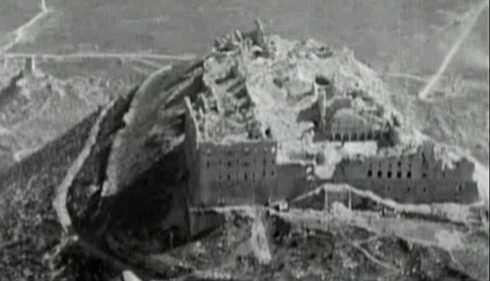
The Canadians were lucky to have avoided this carnage and after cleaning up after Ortona, finally got some well needed rest in the early spring of 1944. Also for the first time since landing in Sicily in July 1943 the Canadian Army received some new regiments and materiel for the continuing fight.
Operation Diadem – The Plan to go up the Liri Valley
Operation Diadem was the name given to the fourth and final assault on the Gustav Line that took place in May 1944. In Canada this operation is usually called the Battle of the Liri Valley as our role was primarily concentrated in that part of the very broad front. We are here today with award winning Canadian military historian Mark Zuehlke who has written numerous books on the Canadian campaign in Italy including The Liri Valley, Canada’s WWII Breakthrough to Rome, which is the most detailed account ever written of our troops in action during the Battle of the Liri Valley.
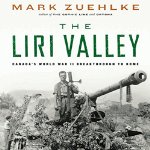
I’ve read all Mark’s books on the Italian campaign in preparation for this trip and I must say I found this one the most difficult to make sense of. Frankly, it seemed to me like just one long drawn out tale of kill or be killed to the point that I was exhausted reading it. Hopefully being on the ground with Mark and Liberation Tours chief historian Phil Craig will make things clearer to me and my fellow Canadians.
First a few maps to help set the context of Operation Diadem. The first is of the Italian Front in May 1944. You can see the Gustav Line running across the Apennine Mountains and splitting in two just before Cassino. The northern spur was the Adolph Hitler Line which was the German fall back position if the Gustav Line was breached. Both would need to be broken to get to Rome. On the left or southern side of the line is the British 8th Army of which we are part, The French Expeditionary Force and the U.S. 5th Army. On the other side of the line is the German 10th Army and the 14th Panzer Corps. Just up the coast is the bulge of the stalled U.S. forces at Anzio, completely surrounded by the German 14th Army. Altogether there are hundreds of thousands of troops about to collide over a massive area.
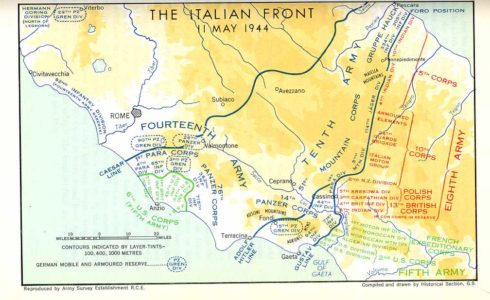
Next is a map showing the Canadian advance up the Liri Valley with the French on the left flank and the British on the right.
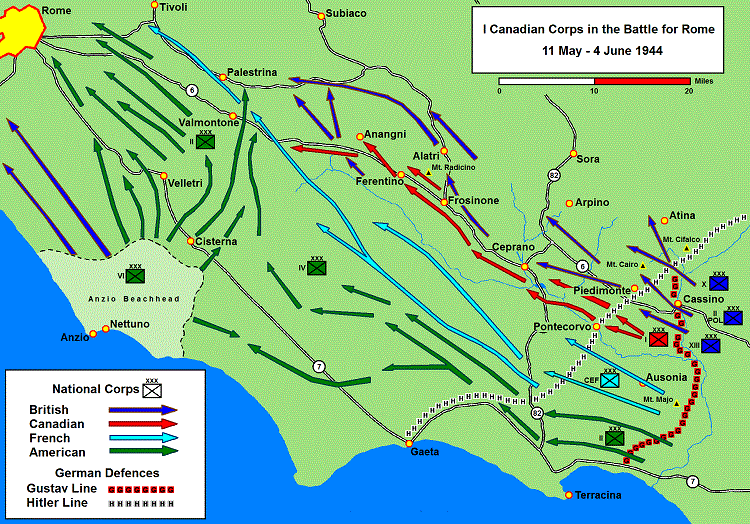
Lastly, is a larger scale map showing the Liri, Melfa and Rapido Rivers as well as the towns of Aquino and Ponte Corvo. We will be visiting all these today on our tour of the Liri Valley campaign.
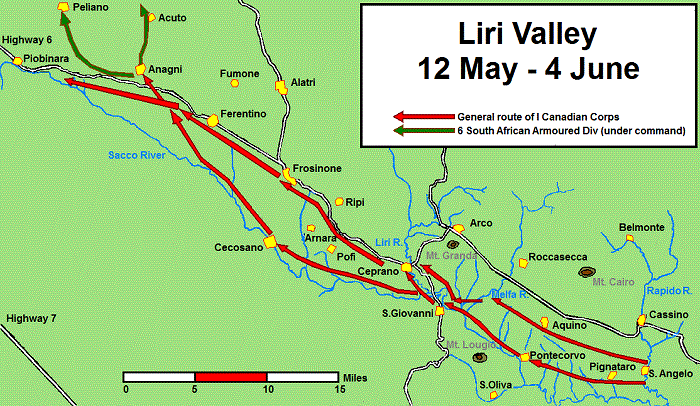
We set out early from the town of Cassino which has been rebuilt since the war, as has the abbey that towers overhead.
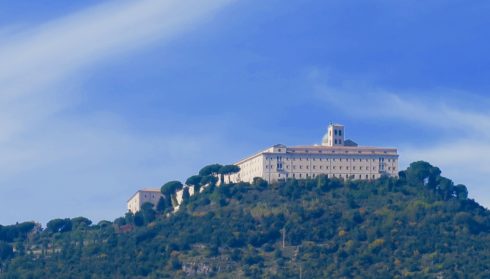
It was finally taken by Polish forces on May 17, 1944. Allied forces had suffered 55,000 casualties trying to take this place, including over 1,000 Poles who lie in this cemetery that you can look down on from the abbey. Not surprisingly it is a very important place of pilgrimage for the Polish nation.
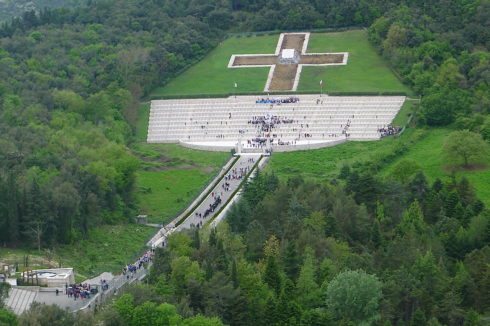
Our first stop is on the banks of the Gari River, also known as the Rapido for reasons that are obvious when you stand on its banks. Phil relates to us the story of the Battle of the Rapido River where over two thousand Americans had already died trying to cross this river in mid-winter. It is also where the Canadians began their attack as part of Operation Diadem in May, 1944.
The group gathers around the Bell of Peace on the riverbank near the sight of London Bridge, one of many that were planned to be erected across the river to facilitate the crossing of the armoured brigades and one of the few that actually did get built as scheduled. The Bell of Peace commemorates all those who fell in the four battles that took place in this area in 1944.
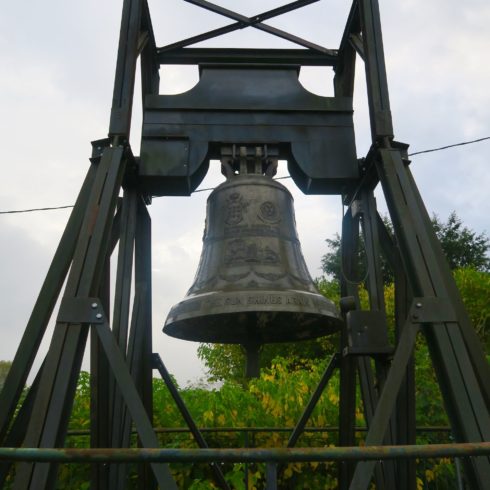
I watch the rapid flow of the river and contemplate what it must have been like to get in a small rubber boat loaded with up to 100 pounds of gear and try to get to the other side, all the while under constant machine gun and mortar fire. I don’t know how they summoned up the courage to do it, but they did – Canadians, Americans, Brits, New Zealanders, Indians, Poles, South Africans, French, Moroccans and others, all united in common cause to break through the Gustav Line on the other side. A number of the members of our group had fathers who were part of this battle and this must be an incredibly emotional moment for them.
Mark narrates to us the story of Kingsmill Bridge, a true tale of on-the-spot Canadian ingenuity that was vital to the success of the Gari River crossing and establishing a foothold from which to cross the Gustav Line. As noted, there were many bridgeheads proposed for the attack, but few that actually got into place as planned. At a spot not far from where we stand Captain Hugh Anthony ‘Tony’ Kingsmill a member of the Canadian Electrical and Mechanical Engineers attached to the Calgary Tank Regiment devised a plan to get a bailey bridge across the Gari River by having it carried atop a turretless Sherman tank which would plunge into the river and then have another tank push the bridge across from behind. This diagram shows how this simple plan allowed some of the first allied tanks to get across the Gari River and infantry to follow.
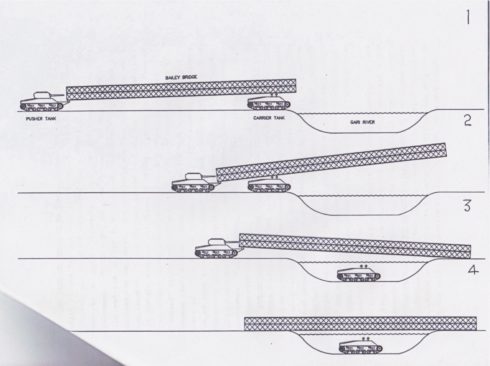
Needless to say, the building of Kingsmill bridge was done while Kingsmill and his crew were under intense enemy fire. Both sides knew how important this bridge would be if successfully completed. Kingsmill was awarded a Military Cross for his actions that day. This is the citation:
| Recommendation: From an original idea that a Bailey bridge could be launched across a river from the backs of tanks, Captain Kingsmill was instrumental in the development and construction of such a bridge used during the 12 May 1944 attack across the Gari River on the Gustav Line (Map Reference 863145). As a result of many rehearsals and careful preparation the bridge framework was assembled in daylight under heavy enemy concentrations. Then, at once, under direct observation and subject to intense mortar and machine gun fire Captain Kingsmill, with no thought for his own safety, coolly walked backwards over open ground a distance of 500 yards in front of the tank-borne bridge. He directed it successfully into place at the first attempt. Wounded by an exploding shell, he dauntlessly remained at the river crossing during the final securing of the span. When an enemy counter-attack developed from the opposite side of the river in an effort to dislodge the bridge, he climbed inside one of the two supporting tanks, methodically proceeding to machine gun the German fire positions. Determined to stem the attack, he called for and received artillery support. Not until the counter-attack was beaten off and the bridge was firmly in place did Captain Kingsmill consider leaving to have his wounds attended. His courage and determination were at all times beyond praise. His most gallant action contributed directly in the smashing of the Gustav Line. |
Tony Kingsmill was a true Canadian hero who enjoyed a long and productive life back in Canada after the war. Here is a link to his obituary in 2010.
We were joined at the Gari River by Roberto Molle and Alessandro Campagna, two Italian men who have been passionate in their desire to make sure that the efforts of the Canadians who helped liberate the Liri Valley, are not forgotten. They would stay with us for the rest of the day.
That’s Alessandro addressing our group with Roberto to his left.
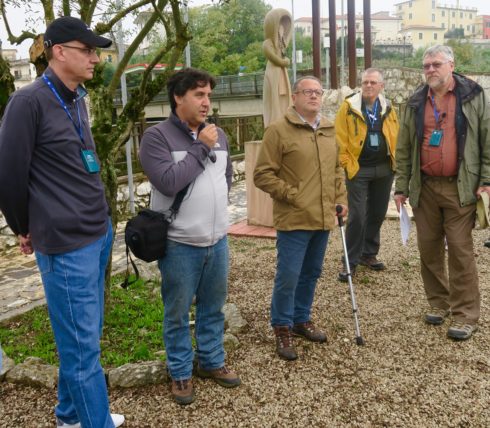
The crossing of the Gari River effectively breached the Gustav Line and left only the Hitler Line between the Allies and Rome. However, the word ‘only’ is an understatement as the Canadians were about to face their most serious and deadly fighting in the entire Italian campaign in the coming days. Please join us for the next post on how we broke the Hitler Line and at what cost.

